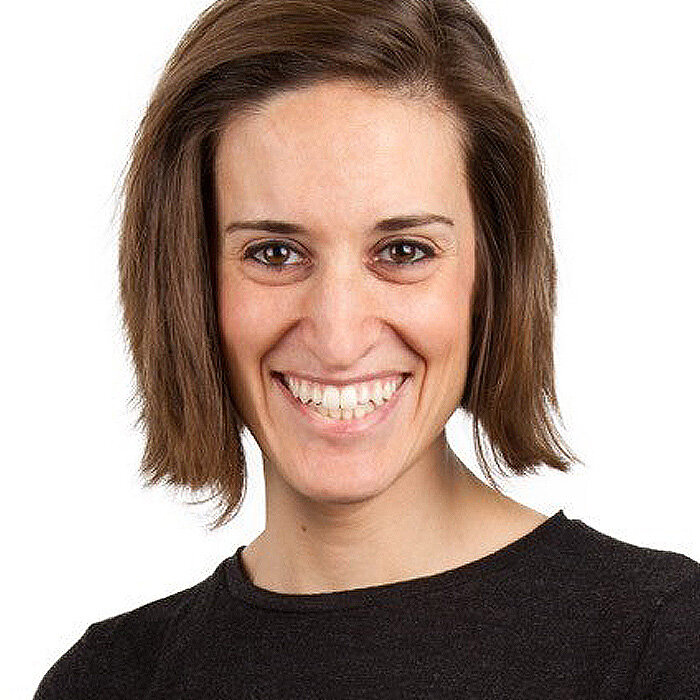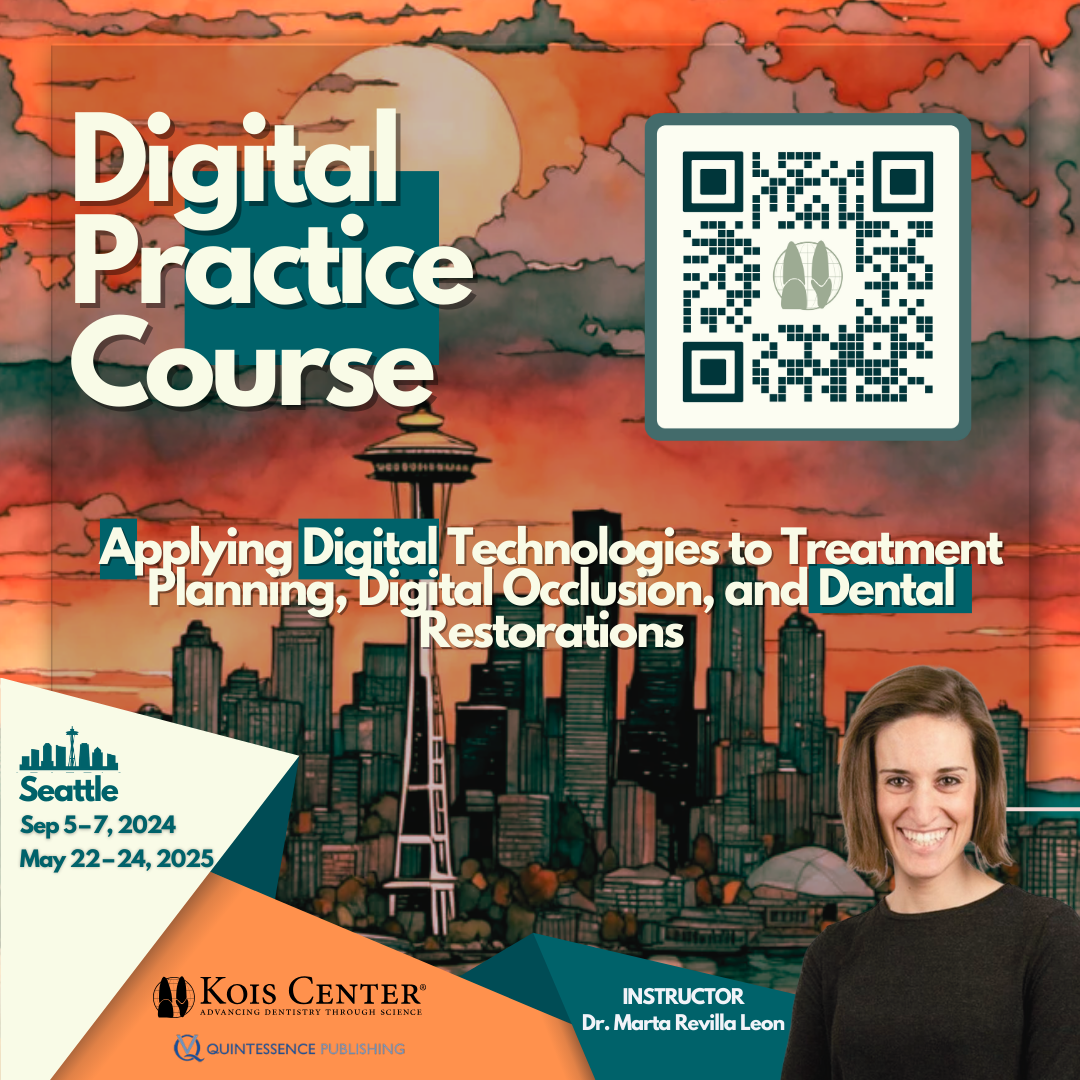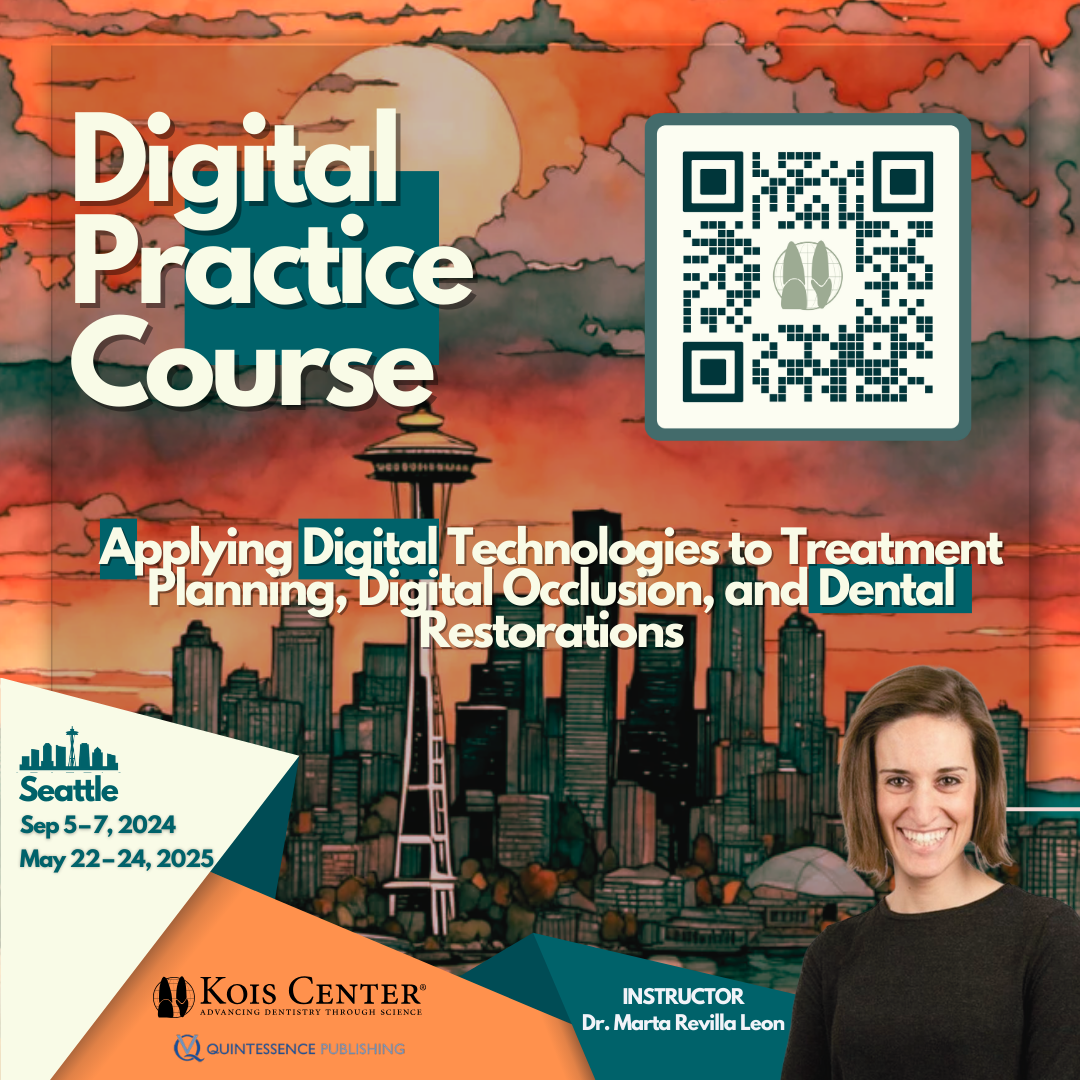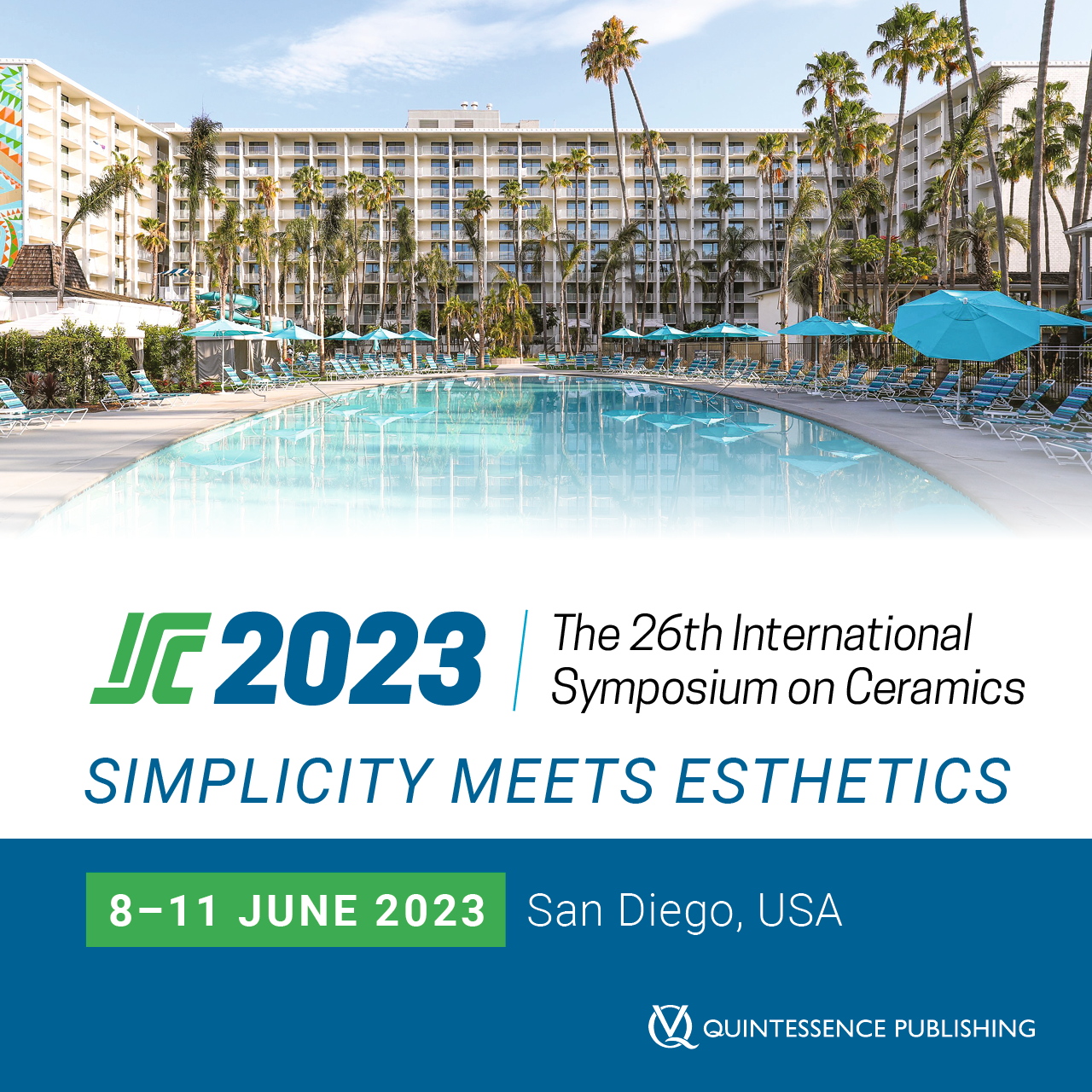The International Journal of Prosthodontics, Pre-Print
3. März 2021,Seiten: 1-20, Sprache: EnglischMostafavi, Delaram / Methani, Mohammed M / Piedra-Cascón, Wenceslao / Zandinejad, Amirali / Att, Wael / Revilla-León, Marta
Purpose: To measure the influence of postpolymerization condition (dry or submerged in water) and time (2, 10, 20, and 40 minutes) on the accuracy of additively manufactured model material.
Materials and methods: A bar standard tessellation language file was used to manufacture the resin specimens (E-Model Light, EnvisionTEC) using a 3D printer (Vida HD, EnvisionTEC). Two groups were created based on the postpolymerization condition: dry (D group) or submerged in water (W group). Each group was divided into four subgroups (D1 to D4 and W1 to W4) depending on the postpolymerizing time (2, 10, 20, and 40 minutes; n = 20 each; N = 160). The specimen dimensions were measured using a low-force digital caliper (Absolute Low Force Caliper Series 573, Mitutoyo). The volume was calculated: V = l × w × h. Shapiro-Wilk test revealed that the data were not normally distributed. Data were analyzed using Kruskal-Wallis and pairwise Mann-Whitney U tests (α = .05).
Results: Significant differences in length, width, height, and volume values were found among the subgroups (P < .0018). In all groups, the width dimension (x-axis) presented the worst accuracy compared to height (z-axis) and length (y-axis) (P < .0018). The D2 and D4 subgroups obtained the closest dimensions to the virtual design; additionally, no significant differences were found between the two subgroups (P < .0018). Dry condition showed higher manufacturing accuracy compared to the water-submerged condition. In the water-submerged subgroups, the highest accuracy was obtained in the W2 and W4 subgroups (P < .0018).
Conclusion: Postpolymerization conditions and time influenced the accuracy of the material tested. Dry postpolymerization condition with a time of 10 and 40 minutes obtained the highest accuracy.
The International Journal of Prosthodontics, 7/2024
Open Access Supplement Online OnlyDOI: 10.11607/ijp.7406, PubMed-ID: 38489217Seiten: s19-s29, Sprache: EnglischDönmez, Mustafa Borga / Çakmak, Gülce / Sabatini, Gabriela Panca / Kahveci, Çigdem / Orgev, Ahmet / Yoon, Hyung-In / Revilla-Léon, Marta / Yilmaz, BurakPurpose: To evaluate the effect of polymerization unit, polishing, and coffee thermocycling on the color and translucency of additively manufactured polyurethane-based resins with different viscosities. In addition, their color behavior was compared with the color of the shade tab throughout the fabrication steps and aging. Materials and Methods: Disk-shaped specimens (Ø10 × 2 mm) were fabricated from polyurethane-based resins with different viscosities (Tera Harz TC-80DP and C&B permanent; n = 30 per material). Baseline color coordinates were measured after cleaning. The specimens in each resin group were divided into three subgroups (n = 10 per subgroup) to be polymerized with different polymerization units (Otoflash G171 [FLN], Wash and Cure 2.0 [CLED1], and P Cure [CLED2]), polished, and subjected to coffee thermocycling. Color coordinates were remeasured after each process. Color differences (ΔE00) and relative translucency parameter (RTP) values were calculated. Data were statistically analyzed (α = .05). Results: Time points and polymerization units affected the ΔE00 for each material (P ≤ .049). ΔE00 of each polymerization unit pair had significant differences within and among different time points within each material (P ≤ .024). ΔE00 (when compared with the shade tab) and RTP were mostly affected by polymerization units and time points within both materials (P ≤ .042). Conclusions: Tested polymerization units, polishing, and coffee thermocycling affected the color difference and translucency of tested resins. Color differences ranged from moderately unacceptable to extremely unacceptable, and the differences in translucency values mostly ranged from perceptible to unacceptable, according to previous thresholds. In addition, tested resin–polymerization unit pairs had unacceptable color differences when compared to the shade tab. CLED1 may enable higher color stability for tested resins.
The International Journal of Prosthodontics, 7/2024
Open Access Supplement Online OnlyDOI: 10.11607/ijp.8847, PubMed-ID: 38498865Seiten: s133-s141, Sprache: EnglischYılmaz, Deniz / Çakmak, Gülce / Güven, Mehmet Esad / Pieralli, Stefano / Yoon, Hyung-In / Revilla-León, Marta / Yilmaz, BurakPurpose: To evaluate the flexural strength (FS) and microhardness of various CAD/CAM restorative materials intended for definitive use. The effect of hydrothermal aging on the mechanical properties of these materials was also investigated. Materials and Methods: A total of 210 bar-shaped specimens (17 × 4 × 1.5 mm ± 0.02 mm) were fabricated via either subtractive manufacturing (SM) methods—reinforced composite resin (SM-CR), polymer-infiltrated ceramic network (SM-PICN), fine-structured feldspathic ceramic (SMFC), nanographene-reinforced polymethyl methacrylate (PMMA; SM-GPMMA), PMMAbased resin (SM-PMMA)—or additive manufacturing (AM) methods with urethane acrylate–based resins (AM-UA1 and AM-UA2). Specimens were then divided into two subgroups (nonaged or hydrothermal aging; n = 15). A three-point flexural strength test was performed, and five specimens from the nonaged group were submitted to microhardness testing. Specimens were subjected to 10,000 thermal cycles, and the measurements were repeated. Results: Regardless of aging, SM-CR had the highest FS (P < .001), followed by SM-GPMMA (P ≤ .042). In nonaged groups, AM-UA2 had a lower FS than all other materials except SM-FC (P = 1.000). In hydrothermal aging groups, AM specimens had lower FS values than other materials, except SM-PMMA. With regard to microhardness, there was no significant difference found between any of the tested materials (P ≥ .945) in the nonaged and hydrothermal aging groups. Conclusions: The effect of hydrothermal aging on FS varied depending on the type of restorative material. Regardless of aging condition, SM-CR showed the highest FS values, whereas SM-FC had the highest microhardness. Hydrothermal aging had no significant influence on the microhardness of the tested materials.
The International Journal of Prosthodontics, 7/2024
Open Access Supplement Online OnlyDOI: 10.11607/ijp.8830, PubMed-ID: 38819942Seiten: s285-s307, Sprache: EnglischRevilla-León, Marta / Gómez-Polo, Miguel / Barmak, Abdul B. / Yilmaz, Burak / Rutkunas, Vygandas / Kois, John C.Purpose: The purpose of this systematic review and meta-analysis was to compare the influence of fabrication method (conventional, subtractive, and additive procedures) and manufacturing trinomial (technology, printer, and material combination) on the marginal and internal fit of cobaltchromium (Co-Cr) tooth-supported frameworks. Materials and Methods: An electronic systematic review was performed in five data bases: MEDLINE/PubMed, Embase, World of Science, Cochrane, and Scopus. Studies that reported the marginal and internal discrepancies of tooth-supported Co-Cr additive manufacturing (AM) frameworks were included. Two authors independently completed the quality assessment of the studies by applying the Joanna Briggs Institute Critical Appraisal Checklist for Quasi-Experimental Studies. A third examiner was consulted to resolve lack of consensus. Results: A total of 31 articles were included and classified based on the evaluation method: manufacturing accuracy, the dual- or triple-scan method, stereomicroscope, optical coordinate measurement machine, microCT, profilometer, and silicone replica. Six subgroups were created: 3D Systems, Bego, Concept Laser, EOS, Kulzer, and Sisma. Due to the heterogeneity and limited data available, only the silicone replica group was considered for meta-analysis. The metaanalysis showed a mean marginal discrepancy of 91.09 μm (I2 = 95%, P < .001) in the conventional group, 77.48 μm (I2 = 99%, P < .001) in the milling group, and 82.92 μm (I2 = 98%, P < .001) in the printing group. Additionally, a mean internal discrepancy of 111.29 μm (I2 = 94%, P < .001) was obtained in the conventional casting group, 121.96 μm (I2 = 100%, P < .001) in the milling group, and 121.25 μm (I2 = 99%, P < .001) in the printing group. Conclusions: Manufacturing method and selective laser melting (SLM) metal manufacturing trinomial did not impact the marginal and internal discrepancies of Co-Cr frameworks for the fabrication of tooth-supported restorations.
The International Journal of Prosthodontics, 5/2024
DOI: 10.11607/ijp.8539, PubMed-ID: 39331580Seiten: 547-558, Sprache: EnglischLuque, Jaime Velasco / Zubizarreta-Macho, Álvaro / Bartolomé, José F. / Kois, John C. / Revilla-León, MartaPurpose: To compare the color dimensions, color discrepancies (ΔE00), and surface roughness of milled materials before and after application of a bleaching agent. Materials and Methods: A total of 10 extracted molars were obtained. Each tooth was cut in transverse sections to create disks (3-mm thick, 10-mm diameter; control group). Disk specimens of eight materials (n = 10 per group) were fabricated: polymethyl methacrylate (PMMA) interim material (PMMA-Telio group), two resin nanoceramics (RNC-Ultimate group and RNC-Cerasmart group), two hybrid ceramics (HC-Shofu group and HC-Enamic group), lithium disilicate (LD-Emax group), zirconia-reinforced glass ceramic (ZGC-Suprinity group), and zirconia (Zr-InCeram group). Color measurements were obtained using a spectrophotometer before and after applying 35% hydrogen peroxide–based bleaching agent. Pre- and postbleaching surface roughness (Sa) analyses were completed using a profilometer. Results: Significant L*, a*, b*, and ΔE00 value differences were found (P < .05). Color discrepancies (ΔE00) ranged from 0.30 ± 0.14 to 4.82 ± 0.10. The highest color discrepancies were measured on the PMMA-Telio group, while the lowest color discrepancies were computed for ZGC-Suprinity, RNCUltimate, and RNC-Cerasmart. Significant surface roughness differences were found (P < .05). The largest increase of surface roughness values between the pre- and postbleaching measurements was obtained in the PMMA-Telio group with a mean ΔSa value of 4.73 ± 3.02, while the largest decrease of surface roughness values between the pre- and postbleaching measurements was obtained in the Zr-InCeram group with a mean ΔSa value of –1.58 ± 0.10. Conclusions: The milled materials showed significant pre- and postbleaching color and surface roughness discrepancies.
The International Journal of Oral & Maxillofacial Implants, 5/2024
DOI: 10.11607/jomi.10683, PubMed-ID: 38607358Seiten: 731-736, Sprache: EnglischStumpel, Lambert J. / Bedrossian, Edmond A. / Revilla-León, MartaThe following technique describes the virtual planning of a single implant by combining an intraoral digital scan, an open-source computer-aided design software program, bone sounding, and 2D radiographic imaging. The surgical implant guide is fabricated using additive manufacturing technologies. Further, the surgical implant guide positioned in the patient’s mouth is used to radiographically verify the estimated mesiodistal implant angulation before proceeding with the surgical intervention and can be modified if necessary. When a CBCT scan is not available, this technique eases implant planning procedures and minimizes possible surgical complications.
Schlagwörter: 3D printing, additive manufacturing, computer-aided design, computer-aided implant planning, surgical implant guide
The International Journal of Prosthodontics, 2/2024
DOI: 10.11607/ijp.8852, PubMed-ID: 38270461Seiten: 221-224, Sprache: EnglischRevilla-León, Marta / Barmak, Basir A. / Sailer, Irena / Kois, John C. / Att, WaelPurpose: To compare the performance of licensed dentists and two software versions (3.5 legacy and 4.0) of an artificial intelligence (AI)-based chatbot (ChatGPT) answering the exam for the 2022 Certification in Implant Dentistry of the European Association for Osseointegration (EAO). Materials and Methods: The 50-question, multiple-choice exam of the EAO for the 2022 Certification in Implant Dentistry was obtained. Three groups were created based on the individual or program answering the exam: licensed dentists (D group) and two software versions of an artificial intelligence (AI)-based chatbot (ChatGPT)—3.5 legacy (ChatGPT-3.5 group) and the 4.0 version (ChatGPT-4.0 group). The EAO provided the results of the 2022 examinees (D group). For the ChatGPT groups, the 50 multiple-choice questions were introduced into both ChatGBT versions, and the answers were recorded. Pearson correlation matrix was used to analyze the linear relationship among the subgroups. The inter- and intraoperator reliability was calculated using Cronbach’s alpha coefficient. One-way ANOVA and Tukey post-hoc tests were used to examine the data (α = .05). Results: ChatGPT was able to pass the exam for the 2022 Certification in Implant Dentistry of the EAO. Additionally, the software version of ChatGPT impacted the score obtained. The 4.0 version not only pass the exam but also obtained a significantly higher score than the 3.5 version and licensed dentists completing the same exam. Conclusions: The AIbased chatbot tested not only passed the exam but performed better than licensed dentists.
The International Journal of Prosthodontics, 4/2023
DOI: 10.11607/ijp.7349, PubMed-ID: 37699189Seiten: 479-485, Sprache: EnglischMostafavi, Delaram / Methani, Mohammed M. / Piedra-Cascón, Wenceslao / Zandinejad, Amirali / Att, Wael / Revilla-León, MartaPurpose: To measure the influence of postpolymerization condition (dry and water-submerged) and time (2, 10, 20, and 40 minutes) on the accuracy of additively manufactured model material. Materials and Methods: A bar standard tessellation language (STL) file was used to manufacture all the resin specimens using a 3D printer. Two groups (n = 80 each) were created based on postpolymerization condition: dry (D group) and water-submerged (W group). Each group was then divided into four subgroups (D1 to D4 and W1 to W4; n = 20 each), which were each assigned a postpolymerizing time (2, 10, 20, and 40 minutes). The specimens’ dimensions were measured using a low-force digital caliper. The volume was calculated as follows: V = l × w × h. Shapiro-Wilk test revealed that the data were not normally distributed. Data were analyzed using Kruskal-Wallis and pairwise Mann-Whitney U tests (α = .05). Results: Significant differences in length, width, height, and volume were found among the subgroups (P < .0018). In all groups, the width dimension (x-axis) presented less accuracy compared to height (z-axis) and length (y-axis) (P < .0018). The D2 and D4 subgroups obtained the closest dimensions to the virtual design, and there were no significant differences between these subgroups (P < .0018). The dry condition showed higher manufacturing accuracy than the water-submerged condition. In the water-submerged subgroups, the highest accuracy was obtained in the W2 and W4 subgroups (P < .0018). Conclusions: Postpolymerization condition and time influenced the accuracy of the material tested. The dry postpolymerization condition with times of 10 and 40 minutes obtained the highest accuracy.
The International Journal of Prosthodontics, 4/2021
Seiten: 419-427, Sprache: EnglischMosier, Meredith / Barmak, Basir A / Gómez-Polo, Miguel / Zandinejad, Amirali / Revilla-León, Marta
Purpose: To compare the rest vertical dimension (RVD) and occlusal vertical dimension (OVD) measurements obtained using a facial scanner with conventional methods and to evaluate the influence of the file format on the accuracy of the digital calculations.
Materials and methods: Participants (N = 30) received marks on the glabella (Gb), tip of the nose (TN), and pogonion (Pg). Interlandmark distances Gb-TN and TN-Pg in the OVD and RVD positions were recorded by two operators conventionally (manual group) and digitally (digital group). For the manual group, measurements were obtained using a caliper. For the digital group, 10 scans in each position were obtained using a facial scanner (Face Camera Pro, Bellus3D) and exported in tessellation with polygonal faces (OBJ) and standard tessellation language (STL) file formats. Digital measurements were performed using both facial scan file formats and a software (Matera 2.4, exocad). The interocclusal rest distance (IRD) and the intraclass correlation coefficient were calculated. Shapiro-Wilk test was used to determine normal distribution. An independent samples t test, one-way analysis of variance, and post hoc Tukey test were used for analyses (± = .05).
Results: No significant differences were found between the manual and digital measurements using the OBJ files or digital measurements using the STL files (P > .05). The IRD ranged from 0.72 ± 0.48 mm to 5.00 ± 1.34 mm. The inter- and intra-operator reliability were significant (P < .001), with a Cronbach's alpha value ranging from .994 to .997.
Conclusion: No difference was found between manual and digital measurements. A high measurement consistency was encountered for each operator and between the operators. The facial scan file format did not influence the digital measurements.
International Journal of Computerized Dentistry, 2/2021
SciencePubMed-ID: 34085497Seiten: 117-123, Sprache: Englisch, DeutschGómez-Polo, Miguel / Ballesteros, Juan / Padilla, Pedro Perales / Pulido, Pedro Perales / Revilla-León, Marta / Ortega, RocíoZiel: Es wird eine Technik zum Merging von Intraoralscan und DVT für die Herstellung implantatgetragener Full-Arch-Brücken beschrieben. Ziel ist eine Verbesserung der Dimensionsgenauigkeit von Intraoralscans zahnloser Kiefer.
Material und Methode: Zunächst werden zwei Datensätze gewonnen: ein Intraoralscan und eine DVT, die beide mit in gleichbleibender Position auf den Implantaten befestigten Scankörpern durchgeführt werden. Anschließend wird der Intraoralscan in mehrere Fragmente zerlegt und in neuer Ausrichtung wieder zusammengesetzt, wobei die Implantatpositionen der DVT als Referenz dienen.
Ergebnisse: Die Technik liefert ein optimiertes digitales Modell mit korrekteren Implantatpositionen, das sich als Grundlage für die Herstellung von Full-arch-Brücken eignet.
Schlussfolgerung: Die vorgeschlagene Methode kann mögliche intraorale Scanfehler minimieren und zuverlässigere digitale Abformungen für implantatgetragene Full-arch-Brücken liefern.
Schlagwörter: Brücke, Dentalimplantate, Full-arch-Rehabilitation, spannungsfreie Passung, Intraoralscanner, IOS, DVT










